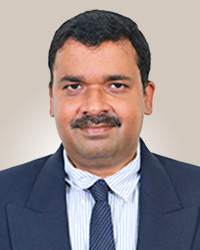Healthy Spine and a Strong Back

The spine consists of 26 bones called vertebrae, which protect and support the spinal cord and nerves. A number of conditions and injuries can affect the spine, which can damage the vertebrae, cause pain, and limit mobility.
Numerous conditions can affect the spine anywhere from the neck to the lower back. Some of the many spine disorders we treat are:
Degenerative spine and disc conditions
- Arthritis
- Degenerative disc disease
- Herniated disc
- Spinal stenosis
- Spondylosis
Other spine conditions and disorders
- Ankylosing spondylitis
- Back pain
- Basilar invagination, basilar impression, and cranial settling
- Chronic spine and back pain
- Kyphosis
- Neck pain
- Osteoporosis and vertebral fractures
- Scheuermann’s kyphosis
- Scoliosis
- Spinal cord cancer
- Spinal deformities
- Spinal fracture
- Spinal tumors
- Spondylolisthesis
Causes and Risk Factors
Spine disorders have a wide variety of causes depending on the particular condition. For some conditions, the causes are unknown. Common causes include:
- Accidents or falls
- Congenital disorders (present since birth)
- Inflammation
- Infection
- Inherited disorders
- Injuries ranging from minor to traumatic
- Degenerative wear and tear that comes with aging
Factors that can increase the risk of developing a spine disorder include
- Excess weight or obesity
- Improper lifting techniques
- Nutrition and lifestyle habits such as sedentary lifestyle, low calcium intake, or smoking
- Other conditions such as osteoarthritis, rheumatoid arthritis, or thyroid disease
- Overuse from exercise or occupational movement
- Poor posture
- Repetitive strenuous activities
Symptoms
Signs and symptoms depend on the specific spine disorder and often affect other parts of the body, depending on the area of the spine or spinal cord that is affected. Common symptoms include:
- Abnormally rounded shoulders or back
- Back or neck pain that can be sharp and stabbing, dull and aching, or burning
- Bladder or bowel dysfunction
- Nausea and/or vomiting
- Pain radiating in the arms or legs
- Stiffness or tightness
- Uneven appearance, such as one shoulder or hip being higher than the other
- Weakness, numbness, or tingling in the arms or legs
Diagnosis
Spine experts conduct a thorough evaluation, including:
- Physical exam
- Discussion of personal and family medical history
- Discussion of symptoms and risk factors
- Neurological exam, if a nerve injury or disorder is suspected
Depending on each patient’s individual case, doctors might recommend one or more tests, such as:
- Magnetic resonance imaging (MRI) scan
- Computed tomography (CT) scan
- X-ray
- Biopsy
- Electromyography (EMG)
Treatment
Spine specialists often use one or more treatments, depending on the specific condition or injury. Treatments we offer include:
- Back bracing
- Cancer treatment such as surgery to remove tumors, radiation therapy, radiosurgery, and chemotherapy
- Ice or heat therapy for injuries
- Injections, such as corticosteroids or nerve blocks, for pain
- Medications such as anti-inflammatories, pain relievers, or muscle relaxers
- Rehabilitation using physical therapy to strengthen and stretch the back and abdominal muscles
- Surgery to replace discs, fuse (connect) vertebrae, open up the spinal canal, or repair nerves

Dr Shyam Sunder Reddy
MBBS, DNB
Consultant Orthopaedic Surgeon
OMNI Hospitals, Kothapet
